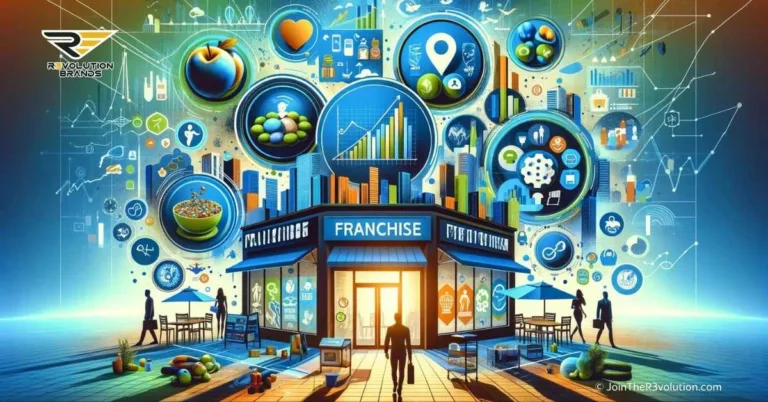Brick-and-mortar businesses continue to thrive despite the rise of e-commerce. The secret to their success lies in understanding the unique dynamics of physical retail and implementing strategies that drive profitable growth.
In this article, we will delve into the secrets of successful brick-and-mortar models, exploring the financial blueprint, the importance of customer experience, and the power of leveraging local market dynamics.
By the end, you’ll have a deep understanding of what it takes to build profitable stores and stand out in the competitive retail landscape.
The Financial Blueprint of High-Margin Retail Stores
Creating a high-margin retail store requires a solid financial blueprint. Understanding the cost structure, optimizing pricing and inventory management, and maximizing operational efficiency are crucial components.
Let’s explore these key elements in detail.
Cost Structure: Balancing Expenses and Revenue
To build a profitable brick-and-mortar store, it is essential to carefully balance expenses and revenue. This starts with understanding and controlling the cost structure of the business. From rent and utilities to payroll and inventory, every expense must be analyzed and managed effectively.
One strategy is to negotiate favorable lease terms with landlords. This can include seeking lower rent, flexible lease durations, or utilizing revenue-based rent agreements.
Additionally, optimizing staffing levels and evaluating vendor costs can help control expenses without compromising the quality of products or the customer experience.
Pricing and Inventory Management: Maximizing Margins
Pricing and inventory management play a critical role in the financial success of a retail store.
By implementing effective pricing strategies, store owners can optimize margins and maximize profitability. This involves conducting market research to understand customer demand, monitoring competitor pricing, and leveraging pricing analytics tools.
Another important aspect is managing inventory levels and turnover. Overstocking can lead to increased carrying costs and markdowns while understocking can result in missed sales opportunities.
Employing inventory management systems and forecasting demand can help strike the right balance and ensure optimal inventory levels.
Operational Efficiency: Streamlining Store Operations
Operational efficiency is essential for a high-margin retail store. This involves streamlining store operations, eliminating inefficiencies, and optimizing processes.
Technology can play a significant role in achieving operational efficiency, from point-of-sale systems that streamline transactions to inventory management software that automates stock tracking.
Regularly reviewing and optimizing store layouts, merchandising displays, and customer flow can also enhance operational efficiency. By investing in training and empowering employees to provide excellent customer service, stores can further improve efficiency and build customer loyalty.
Customer Experience: The Heart of Brick and Mortar Success
The customer experience is a critical differentiating factor for brick-and-mortar businesses. Creating memorable experiences that engage customers and foster loyalty requires a holistic approach.
Let’s explore the key elements of a successful customer experience strategy.

Personalized Service: Going Above and Beyond
In a world of automation and self-service, providing personalized service is one of the most powerful ways brick-and-mortar stores can differentiate themselves. By training employees to truly understand customer needs and preferences, stores can offer tailored recommendations and build authentic connections.
Going above and beyond in customer service, whether it’s offering personalized styling advice or providing exceptional after-sales support, can create a lasting impression. These experiences build customer loyalty and drive repeat visits and word-of-mouth referrals.
Interactive and Engaging Environments
Creating an interactive and engaging environment is another key aspect of the customer experience.
Brick-and-mortar stores have the advantage of providing customers with tangible and sensory experiences that cannot be replicated online. Incorporating interactive displays, digital signage, and experiential elements can captivate customers and make the shopping experience more memorable.
In-store events, workshops, and demonstrations further enhance engagement and encourage customers to spend more time in the store. By offering unique experiences, retail businesses can cultivate a loyal customer base and drive increased sales.
Seamless Omni-Channel Integration
In today’s connected world, successful brick-and-mortar businesses seamlessly integrate with online channels. This allows customers to engage with the brand across various touchpoints and enhances the overall shopping experience.
This integration can include features such as online ordering with in-store pickup, personalized digital marketing campaigns, and loyalty programs that span both offline and online purchases.
By leveraging technology to bridge the gap between online and offline, retail stores can provide a cohesive brand experience that meets customers’ evolving expectations.
Leveraging Local Market Dynamics for Retail Excellence
Understanding and leveraging local market dynamics is an essential strategy for successful brick-and-mortar businesses. By tailoring offerings to the specific needs and preferences of the local community, stores can gain a competitive edge.
Let’s explore some key considerations for leveraging local market dynamics.
Market Research: Know Your Local Customers
Conducting thorough market research is crucial to understanding local customers and their preferences. This involves analyzing demographic data, conducting surveys, and closely observing competitor strategies.
By gaining deep insights into the local market, stores can tailor their product offerings and marketing messages to resonate with the target audience.
Community Engagement: Building Relationships
Building relationships with the local community is a powerful way to create brand loyalty and drive foot traffic. Retail businesses can engage with the community through partnerships with local organizations, sponsoring events, or hosting charitable initiatives.
In-store events that celebrate local artisans or showcase regional products can also foster a sense of community and create a unique shopping experience.
By actively participating in the local ecosystem, stores can position themselves as integral parts of the community and nurture customer loyalty.
Personalized Marketing: Targeted Messaging
Personalized marketing campaigns that speak directly to local customers can significantly impact sales.
By leveraging data analytics and customer segmentation, stores can tailor their marketing messages to the specific interests and preferences of the local audience. This can include offering special promotions or discounts based on local events or collaborating with local influencers to amplify brand awareness.
By using targeted messaging and personalized marketing tactics, retail businesses can increase customer engagement and loyalty within the local market.
Knowing the Secrets of Successful
Building a profitable brick-and-mortar business requires a deep understanding of the financial blueprint, customer experience, and leveraging local market dynamics. The success of high-margin retail stores is driven by strategic cost management, effective pricing and inventory management, and operational efficiency.
Providing personalized service, creating interactive environments, and seamlessly integrating online and offline channels enhance the customer experience.
Furthermore, understanding local customers, engaging with the community, and delivering personalized marketing messages strengthen retail excellence.
To thrive in the competitive retail landscape, brick-and-mortar businesses must embrace these secrets to success. By implementing these strategies and continuously evolving with changing consumer expectations, retail entrepreneurs can build profitable stores that stand the test of time.





